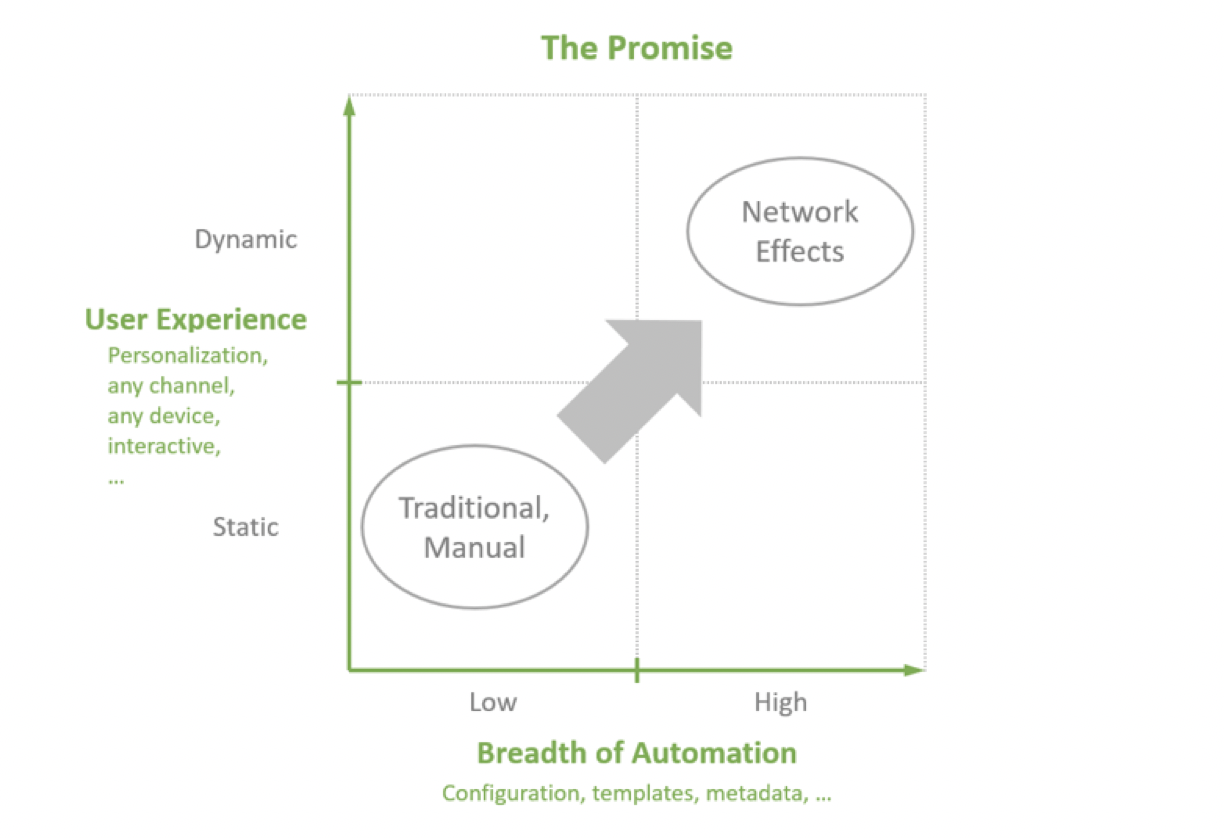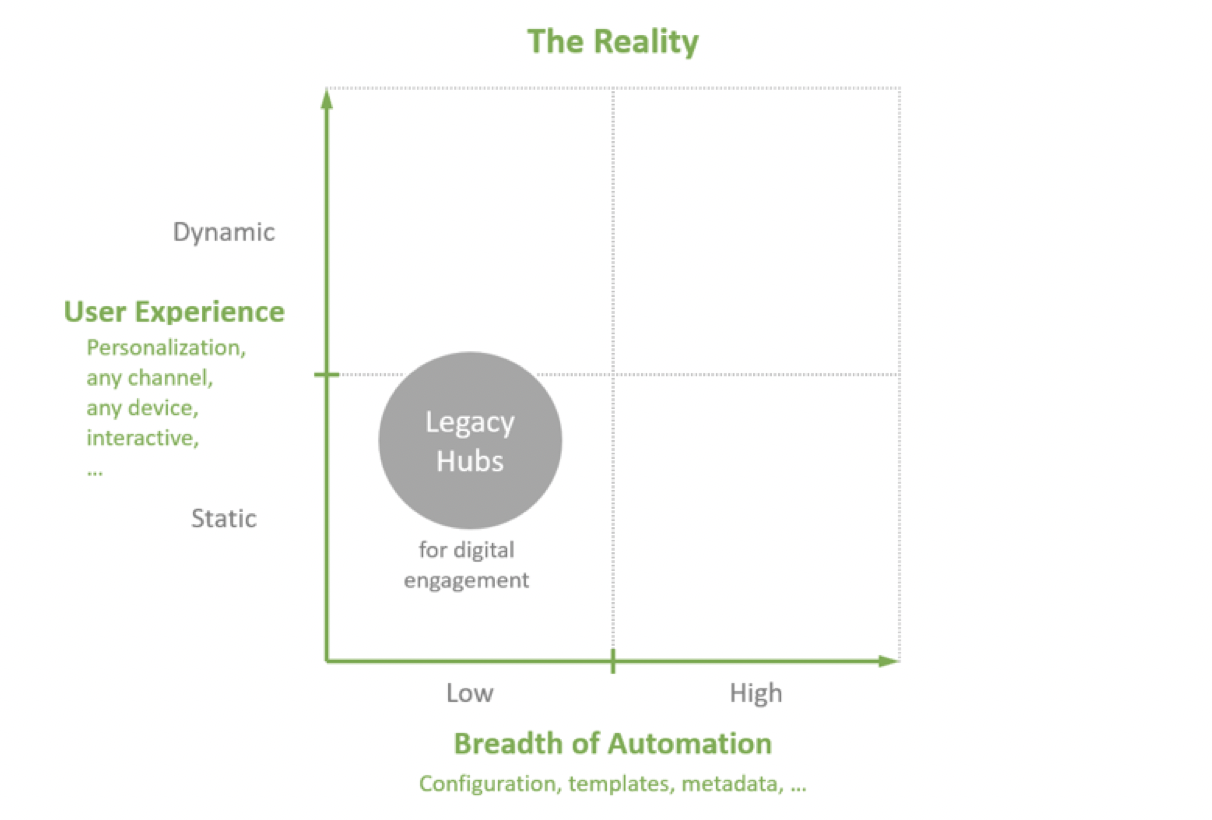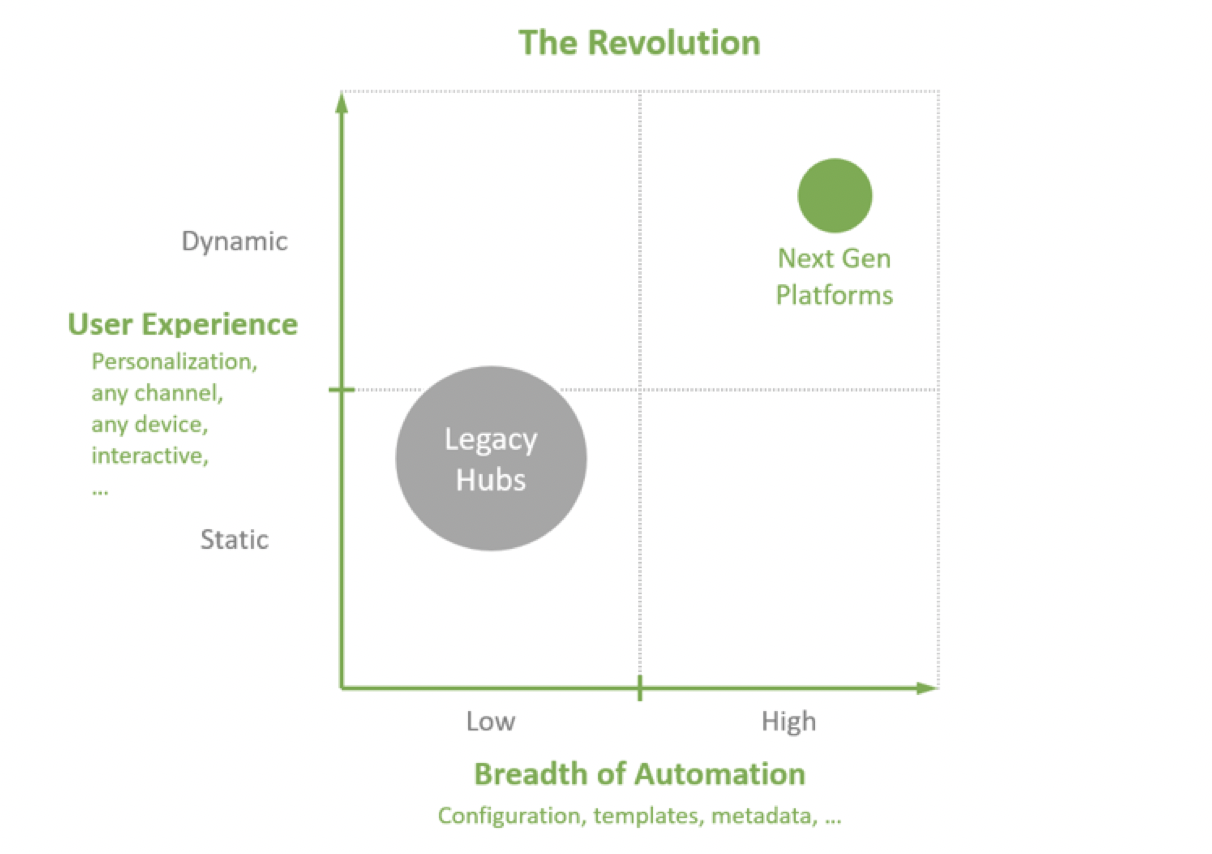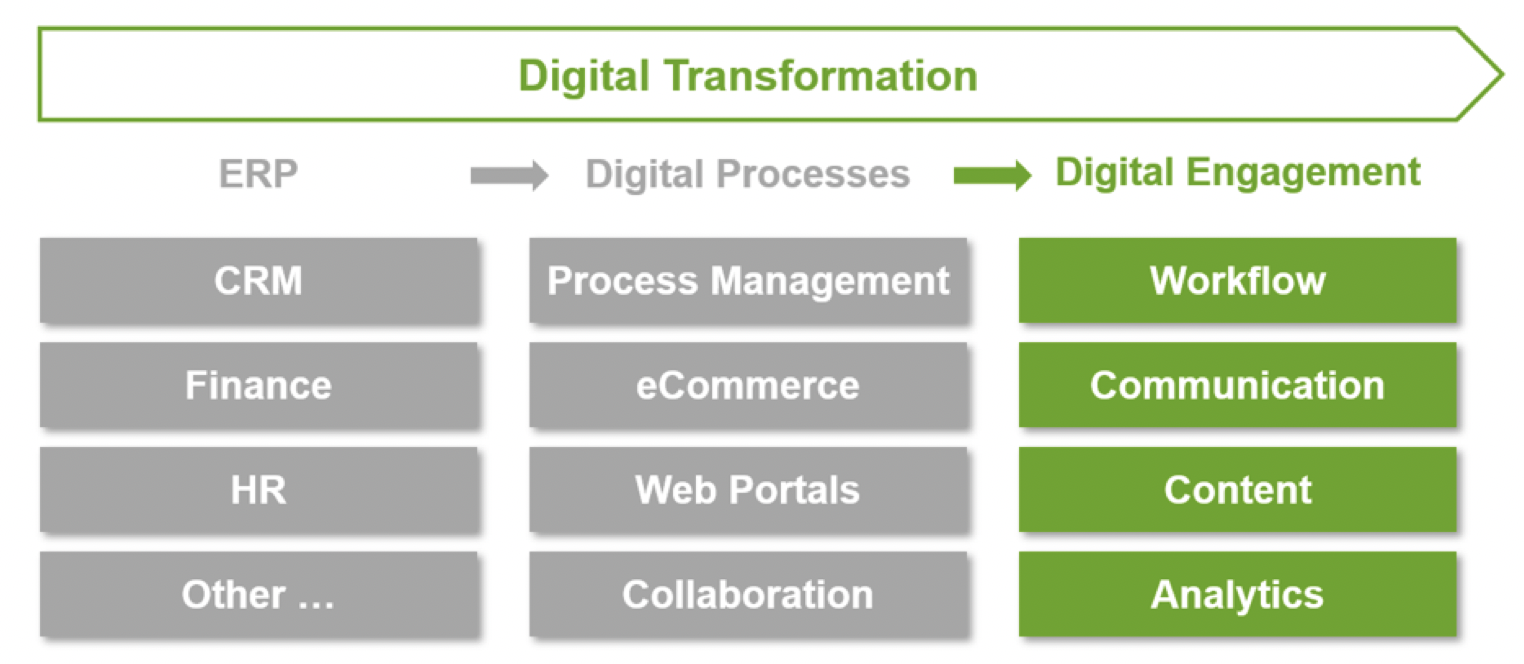Next Gen Digital Engagement will be Purpose-built for the Mobile Era


Posted By: Chris Minor
January 10th, 2022
4 minute read
Most digital engagement hubs, systems and platforms were built pre-mobile to send email with links to static webpages and forms or surveys. They’re complex, support-heavy and cumbersome. Campaigns can take weeks or even months to set up, and often depend upon IT or external vendor support teams.
Customer tastes have shifted to mobile and want more personalization. Every marketer I’ve spoken with who does mobile sees much higher engagement rates than email.
Underneath the surface there is an even bigger story, and that is the widening gap behind the promise of digital transformation and the actual capabilities of these “transformed” legacy hubs.
Here are three charts explaining how user experience and breadth of automation are key to the revolution; for teams wanting to leapfrog the complex transformation of legacy systems in favor of more agile and powerful approaches to digital engagement.
The Promise of Digital Engagement: Personalization at Scale
With digital engagement should come a shift from manual, brick and mortar, labor intensive engagement to the power of network effects, where thousands of views, clicks, purchases, etc can be carried out at the same time, anytime. This is enabled by gains in user experience and breadth of process automation.
In the last ten years we’ve seen a massive shift in wealth from legacy brick and mortar companies to those that master the power of network effects. This shift is now spreading into other industries and changing the competitive landscape, altering the fundamental chemistry of success and valuation.

The Reality: Slow and Cumbersome Journey Building
As I mentioned last week, legacy digital engagement platforms and multichannel hubs are cumbersome, require extensive specialized skills and are often deployed more like developer SDKs, versus complete solutions that can be powered by drag and drop. The products often have static personalization capabilities, as they were designed to simply drive clicks to static one size fits all web pages.

The webpages use links to other pages to “personalize” the journey, but it’s still up to the customer find the right path on a large and often cumbersome website. For mobile users this isn’t ideal.
Legacy platforms and digital engagement hubs have added integrations and modules to be relevant for mobile, but the complexity of configuring customer journeys remains, and becomes even worse in some cases. Hence the need for more external support, from IT or consultants.
Organizations with “moon shot” budgets can live with these new integrations and their costs and delays. But for those who cannot, there is a high probability of project failure or cost overruns, not to mention the ceding of engagement gains to more agile competitors.
The Revolution: Next Gen Digital Engagement Platforms
The digital revolution refers to the coming shift from legacy complexity and static user experiences to platforms purpose-built for mobile (texting and email) and new levels of dynamic, personal engagement at scale.
This is where digital engagement needs to head, versus increased investments in (technical debt-ridden) outdated architectures. These new platforms can be easily integrated with existing digital stack via APIs, allowing teams to create personalized, scalable campaigns in a fraction of the time and effort required and with little need for external vendor support.

The Next Gen Digital Engagement Stack
Where does the revolution take us? To a new stack interconnected with APIs that is purpose-built for dynamic mobile experience that can be deployed with a new breadth of automation.

A stack that delivers on the promise of digital without the legacy integration headaches and delays. Highly personalized campaigns built quickly for competitive advantage instead of merely extending the life of legacy solutions at considerable disadvantage.
Want to learn more?
Read the earlier post: "What’s So Fun About Digital Transformation?
Find out how a specialty pharmacy joined the digital engagement revolution. Specialty Pharmacy Case Study
Next time we’ll discuss the difference between static and dynamic personalization and why it’s strategic to the future of mobile engagement and competitive advantage.
